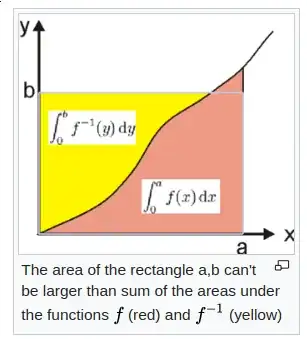From the Wikipedia page on Young's Inequality:
This above statement of Young's Inequality is the most frequent one that I've encountered in textbooks. Yet consider:
This second version of Young's Inequality for increasing functions has a very nice, intuitive visual proof (shown above).
Problem: What is connecting Young's Inequality for increasing functions to Young's Inequality for conjugate Holder exponents? In particular, is there a way to prove that
$$ ab \le {a^p \over p} + {b^q \over q} $$
using the proof involving increasing functions, shown visually above?


